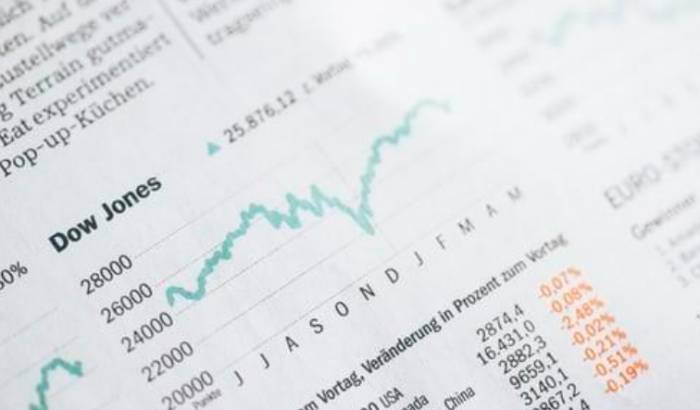Common Fund Classifications
Broad-based Index Funds: The well-known CSI 300 Index, for instance, selects the 300 largest market capitalization companies listed in Shanghai and Shenzhen, which can be considered a large-cap index. The CSI 500 Index excludes the top 300 largest market cap companies and then ranks the next 500 companies by market cap, which can be understood as a mid-cap index. The ChiNext Index is essentially a small-cap index. Of course, there are other broad-based indices, such as the Shanghai SE 50 Index, which tracks the top 50 market cap stocks on the Shanghai Stock Exchange, and the CSI 100, which tracks the top 100 market cap stocks across both the Shanghai and Shenzhen stock exchanges.
Industry Index Funds: Corresponding to "broad-based" indices are so-called industry indices. Industry indices typically include consumer industry indices, healthcare indices, military industry indices, and elderly care indices, among others. Companies are selected within an industry according to certain criteria, facilitating investment for investors who have a preference for a particular industry.
Strategy Index Funds: Strategy indices are generally the same as factor indices. Fund companies offer funds such as the Dacheng CSI Dividend Index Fund, CSI 500 Low Volatility Index Fund, CSI 300 Value Index Fund, and Fundamental 60 Index Fund. The factors mentioned above employ concepts like dividend factors, low volatility factors, value factors, and quality factors.
Advertisement
For the average person, choosing broad-based index funds is sufficient. Regarding industry indices, if you have a deep understanding of a particular industry, you can appropriately select a few investment targets. As for factor indices, the factors you purchase may outperform the market or underperform. The judgment of the average investor may not be accurate, so broad-based indices are a good choice for the average investor.
Different Fund Fee StructuresOften, we see fund companies' names with suffixes like A, B, C, such as Dacheng CSI 300 A. What does the letter A represent here?
The A, B, and C categories of funds mainly distinguish the charging methods. A-class funds refer to "front-end charging," which means the subscription fee is deducted when you purchase. B-class funds refer to "back-end charging," where the subscription fee is not deducted at the time of purchase but is deducted when you redeem. C-class indicates no establishment of subscription and redemption fees, but a not-inconsiderable sales service fee is extracted daily, suitable for short-term investors who buy and sell quickly. Currently, the mainstream funds in the market are mostly A and B classes.
The correct way to buy funds - fixed investment
What is fixed investment?
Fund fixed investment means investing a fixed amount (such as 500 yuan) into a designated open-end fund at a fixed time (such as the monthly salary day). On-exchange fixed investment refers to buying through a securities app, while off-exchange fixed investment refers to buying on a third-party platform.
Why fixed investment?
First, in the long run, the market is upward, and equity is the best-performing asset over the long term, without exception.
Second, investing in indices avoids the risk of selecting individual stocks, and it does not require us to have strong analytical abilities.
Third, fixed investment allows us not to worry about timing. If the stock market rises, our market value follows suit. If the stock market falls, we buy more assets for each dollar, reducing the cost.
We don't have to worry about the index disappearing, and it's hard to imagine the stock markets of China or the United States completely vanishing, because behind them lies the entire nation's strength and productivity.The Basic Costs of Funds and Pitfalls to Avoid

For the average investor, one of the most common ways to invest is by purchasing various types of funds. So, what are the typical costs associated with a typical fund?
Firstly, there is a certain management fee to be paid—this fee is primarily used to cover the salaries of the fund manager and team, the cost of renting office space, and various operational expenses.
Another common cost is the subscription fee, which is a one-time charge. For example, if a fund has a subscription fee of 1.5%, this means that when you purchase 100 units of the fund, 1.5 units are taken away immediately. Essentially, as soon as the fund is credited to your account, you are left with 98.5 units. This money is essentially taken by various banks, distribution agencies, or the fund company.
There is also a hidden cost known as the redemption fee. The redemption fee is charged if you decide you no longer wish to invest and want to withdraw your money; these institutions will charge you an additional fee.
For instance, if you hold a fund in which you have invested 100 units, and if the total of these three fees amounts to 3%, and your annual investment return rate is 10%, then your 100 units would grow to 259 units after ten years, and to 673 units after twenty years. However, after various institutions have taken their cut, calculated at 7%, how much would your 100 units be worth? After ten years, it would be 197 units, and after twenty years, it would be 387 units.
What does this mean? If you calculate based on a ten-year investment, 40% of your profit is taken away by others; if calculated over twenty years, 50% of your profit is taken away, which is as much as half.
Currently, the management fee for the CSI 300 index funds in our country is around 0.5%, and with custody fees, subscription fees, and other costs, the average annual cost is likely to be between 0.8% and 1.0%. This is a reference figure; avoid overpaying.
Understanding these basic facts, we can buy broad market index funds in the correct manner, hold them patiently, persist with regular investments, and gradually become wealthy.